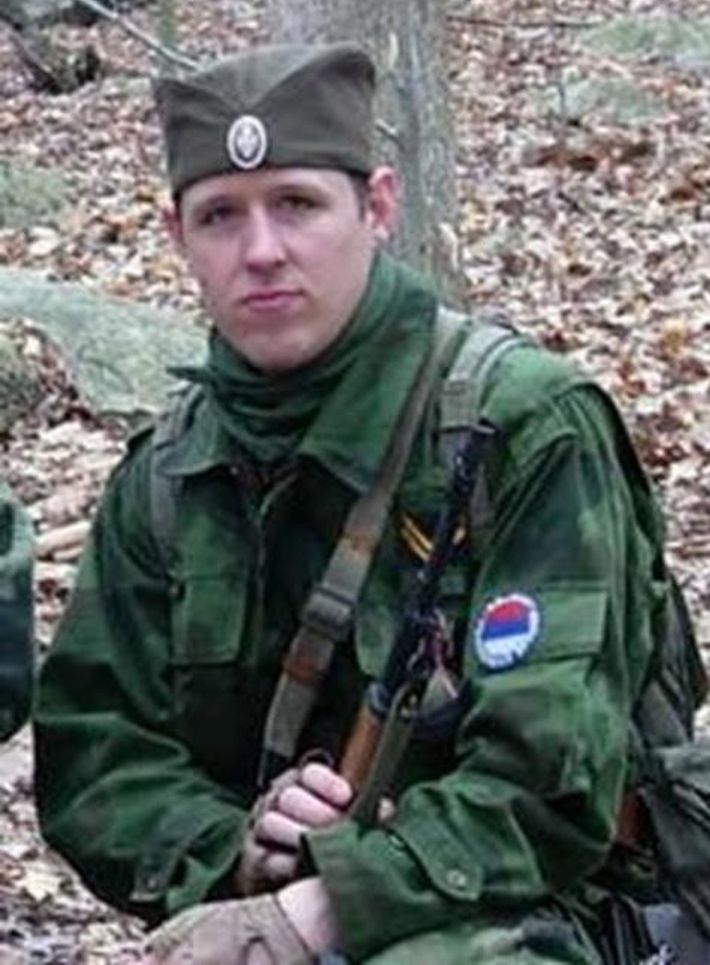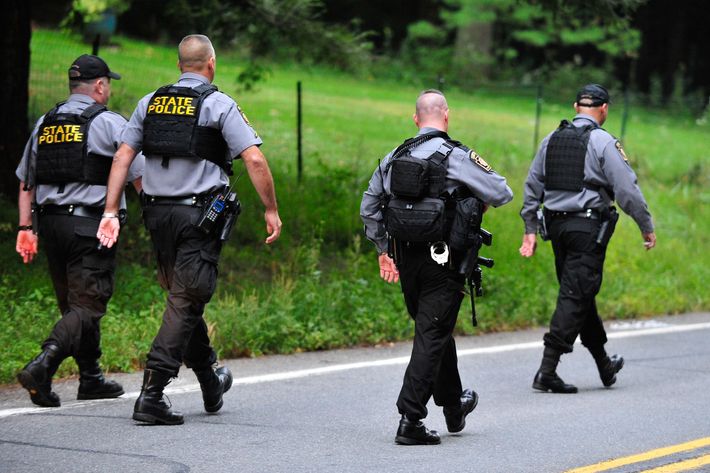
During a nighttime shift change at a Pennsylvania state police barracks in the Poconos last month, a 31-year-old man named Eric Frein, operating a rifle and firing from a distance, shot two state troopers and killed one of them. Then he ran. It has been more than a month since the shooting, and police have long confined their search for the shooter to a small section of woods near where he grew up, about five square miles in size. As many as 1,000 law-enforcement officers at a time have been after Frein, and there have been several instances where they have caught sight of him, but no cop has seemed to come particularly close to apprehending him. A state police lieutenant colonel named George Blevins told a press conference that Frein seemed to be almost taunting the cops chasing him, appearing in places where they could see but not reach him. “It’s almost like this is a game to him,” Blevins said.
What kind of game, exactly, has been a little harder to pin down. Perhaps it has something to do with ideology, though Frein left nothing like a manifesto. Cops, combing through his background, described Frein as a survivalist and suggested he harbored grudges against the police and perhaps society: “He has made statements about wanting to kill law enforcement officers and also to commit acts of mass murder.” Friends and acquaintances who have spoken to the press have not remembered anything quite that severe, though they have mentioned a libertarian-inflected tendency to criticize the government. Perhaps, too, his motives had something to do with guns. Frein, the son of an army major, seems to have worked only sporadically through his adult life (a stint at a grocery store, seasonal work teaching archery and riflery for the Boy Scouts) and to have spent much of his time practicing marksmanship (“He doesn’t miss,” his military father told police, ominously) and in war reenactment — he specialized in reenactments of Serbian army maneuvers and battles. The Serbian army, in real life, helped to carry out a genocide, but Frein’s re-enactor friends said his enthusiasm for the Serbian group had mostly to do with the ragtag look of their fatigues. “This is more reminiscent of the first Rambo movie,” one of them said.

Last Wednesday, police said they had gotten within 200 yards of Frein, only for him to elude them again. They found a campsite — discarded fatigues, a green Jansport backpack, and a diary in which Frein described the shooting, which a police spokesman read at a press conference. “Got a shot around 11 p.m. and took it. He dropped. I was surprised at how quick. I took a follow-up shot on his head and neck area. He was still and quiet after that. Another cop approached. As he went to kneel I took a shot at him and jumped in the door. His legs were visible and still.” It seems likely that Frein’s politics, from what we know of them, might have served to dehumanize the cops he would kill in his own mind. But this diary entry reads less like a document of a political act than the account of someone who spent a very long time pantomiming acts of killing and was interested in knowing what it felt like to kill for real. “I was surprised at how quick. He was still and quiet after that. His legs were visible and still.” These are the words of a man who has, in his own mind, aestheticized murder.
Because Frein was quickly described as a survivalist and because he has eluded police for so long, many reports have compared this search to that for Eric Rudolph, who in the 1990s detonated homemade bombs at two abortion clinics, an Atlanta lesbian bar, and the Olympic Park before disappearing into the Appalachian wilderness, where he evaded searches for five years. Rudolph’s politics, and the sheer length of his escape, made him a backwoods folk hero — billboards were taken out cheering him on, and there were T-shirts bearing the slogan “Run, Rudolph, Run.”
“Many of the people who live in the mountainous search area regard the fugitive as far less menacing than the federal and state agents sent to hunt him down,” the great student of Southern culture, Tony Horwitz, wrote in The New Yorker. Horwitz quoted a woman becoming “misty-eyed” when she thought about Rudolph on Christmas Day, and a pastor who described the North Carolina woods as clannish territory said of Rudolph, “He’s one of the clan.”
The great social alarm that was raised by the long Rudolph flight had to do with the culture that supported and shrouded him. The real revelations of the Horwitz piece and others like it were that in some parts of rural America there were pastors, surgeons, recycling-plant workers — otherwise law-abiding social stalwarts — who could convince themselves that Rudolph’s campaign of murders and terror served to advance political causes they believed in: against abortion, against the spread of gay rights, for a radically limited government.

None of this has happened with Frein. No group has claimed him — not the survivalists, not the libertarians, not the remaining one world government types, and not the doomsday preppers. On the conspiracy boards you can find a couple of folks speculating about whether this was a “false flag” attack, but by the standards of those places it is all very halfhearted. Frein’s politics and motives are still a little murky, whereas Rudolph’s were very clear. But even so, this episode may also reflect something subtle about the ways in which libertarianism has operated on the right and how that movement has created barriers between itself and the culture that might obviously support it.
The Frein manhunt may be less culturally significant than the pursuit of Rudolph, but as a pure fugitive matter, it is perhaps even stranger and more fascinating. We assume that more of the earth is covered, observable, than we did a decade and a half ago. Surveillance is more complete. Early on, there had been some hope that surveillance cameras that individual hunters operated throughout the wilderness to try to track the passing deer might help to pinpoint Frein, but they don’t seem to have made a difference. That Frein has not yet been caught is scary. It is also simply astonishing that even just two hours from New York there are unmonitored places in which a determined person can, for a remarkably long time, simply slip away.





























